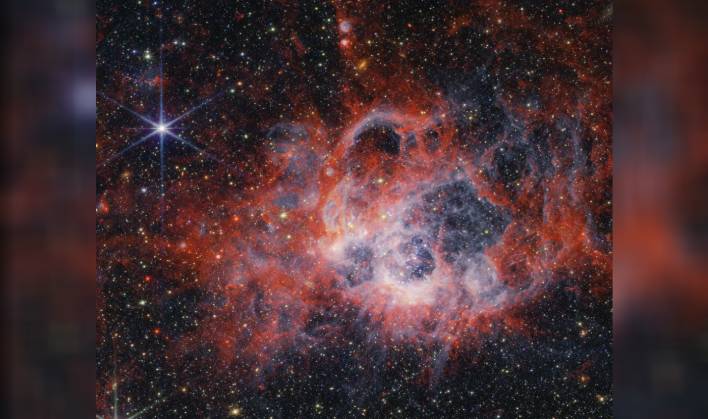NASA Plays Peek-A-Boo With A Stellar Nursery And Spots Wild Tendrils In High-Res

According to NASA, NGC 604, located in the Triangulum galaxy, houses over 200 of the “hottest, most massive kinds of stars,” all of which are in the early stages of development. This presents a unique opportunity for astronomers to study these objects at such an early point in their life. Webb’s near-infrared NIRCam instrument captured the tendrils and clumps of emission, that appear in bright red in the image above, in exquisite detail. Ionized hydrogen permeates throughout the image, emitting a white and blue supernatural glow. Webb also recently imaged another star forming region, which is believed to be the home of some of the earliest stars to shine in the known universe.
Webb’s ability to peer into distant celestial bodies, such as the star forming region of NGC 604, also unveils features of the main cloud that were previously undetected by the likes of the Hubble Space Telescope. Two bright, young stars are visible as they sculpt out holes in dust above the central nebula. In Hubble images, these stars only appeared as “splotches.”
The space agency added that Webb’s MIRI instrument was also able to give greater insight into the development of NGC 604, as there are fewer stars able to be seen. NASA remarked, “This is because hot stars emit much less light at these wavelengths, while the larger clouds of cooler gas and dust glow.” Also present in the MIRI image are blue tendrils, which point to the presence of polycyclic aromatic hydrocarbons (PAHs).
Astronomers estimate NGC 604 to be around 3.5 million years old, and the glowing gas that stretches across the region spans some 1,300 light-years across.

